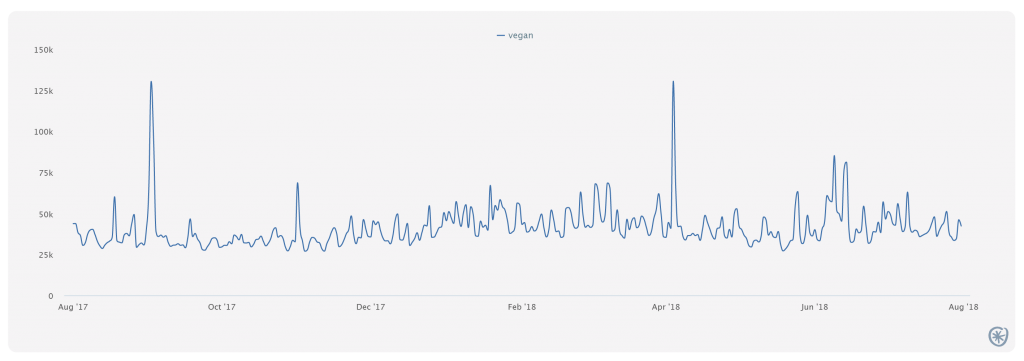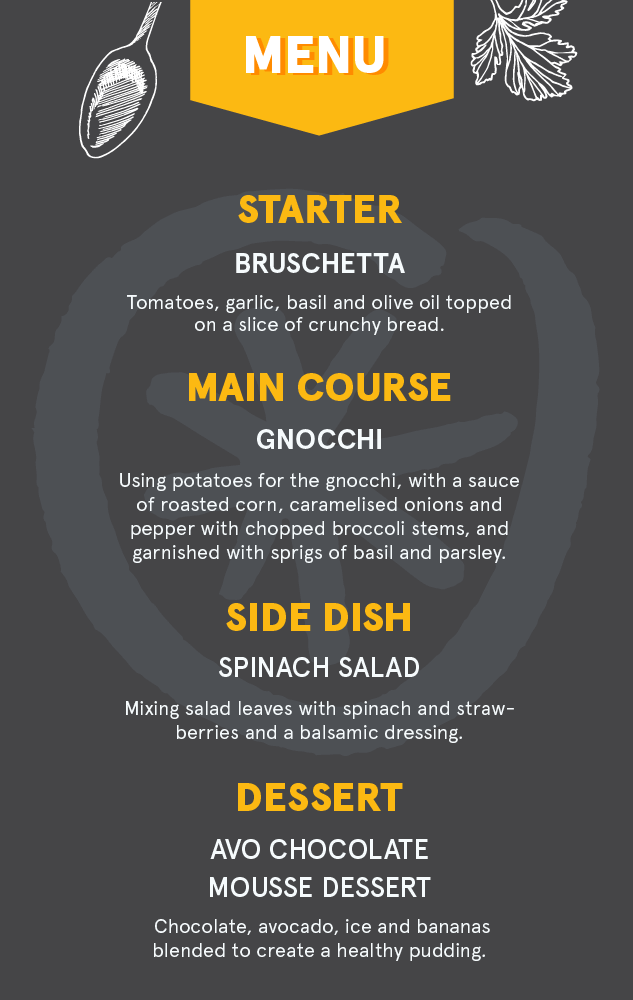We fed our vertical AI 15k Instagram vegan meals and got the top 20 foods and a menu
Vegan food has become exponentially popular over the past few years. While estimates about the vegan population vary widely, their ranks are growing: vegans grew by 600% in the past 3 years in the US, and 340% in the past 10 years in the UK.
Interest in veganism is steadily growing online as well: worldwide searches for the term keep growing, and the number of Instagram posts hashtagged #vegan reaching over 65 million.
On Twitter too, mentions are steadily increasing:

Mentions of the word vegan on Twitter in 2017-2018, analysed on Pulsar TRENDS
Much of this trend is fed by, and growing on Instagram. “The personal nature of Instagram allows individuals to integrate veganism into relatable and stimulating posts whilst simultaneously dispelling a lot of misconceptions and stereotypes around what it means to be a vegan,” as Beth Trundle, head of food at marketing agency Social Chain told The Independent.
So what kinds of food is finding its way onto vegan tables? To understand what really goes into vegan meals, we used Pulsar’s next generation image recognition AI modules (called Vertical AI, which are trained to specific subjects like food in this instance) to analyze vegan dishes shared around the world on Instagram.
Unlike general image tagging, vertical AI allows marketers to get much more granular and specific visual insights about the images posted by the audience you are trying to understand. While general image tagging can identify pictures of food within large image sets, the vertical food module allows you to recognize individual dishes, drilling down all the way to individual ingredients.
In order to test this, we took some popular vegan hashtags, and applied the food module to find some of the most commonly used ingredients by people posting pictures with these hashtags.
We set up a search using Pulsar TRAC to pull in public Instagram posts tagged with #VeganFood or #VeganRecipes published globally over a course of a handful of days. This gave us nearly 15,000 individual posts to analyze.

Running this dataset through a general image recognition AI module would result in very “noisy” results as image recognition is applied without a specific context, with a lot of obvious or confusing image tags which do not help us with our goal of understanding ingredients: Plate, Glass, Elephant, Fruit, Human.
The vertical AI module instead picked up over 200 different ingredients and dishes as it knows we’re specifically looking at food stuffs.
A handful of the ingredients picked up by the module were extremely non-vegan foods, like cheese, cream and meat. This is perhaps a testament to the skill of vegan chefs - and indeed the companies who are creating meat and dairy substitutes that sold alongside ‘real’ meat in supermarkets - but are not helpful to the search.
So after hand-picking and eliminating a few false positives, the top 20 ingredients came out to be:
- Salad
- Chocolate
- Pepper
- Tomato
- Bread
- Garlic
- Rice
- Onion
- Potato
- Avocado
- Corn
- Spinach
- Pasta
- Ice
- Banana
- Strawberry
- Apple
- Basil
- Parsley
- Broccoli
Defeating all stereotypes, avocado didn’t top the chart, and interestingly chocolate was used in 36% of the dishes, perhaps because of the strong trend for vegan baking, and alternative desserts.
Using this set of ingredients, we put on our chef hats and came up with a three course vegan feast (using everything in the top 20 but apple and rice):

It seems like our Vertical AI could soon be making its way onto vegan Masterchef.
